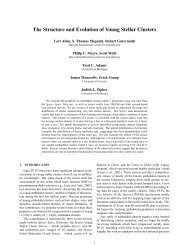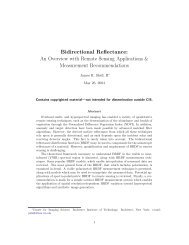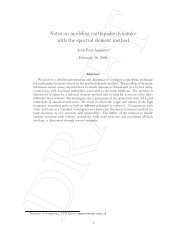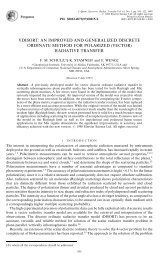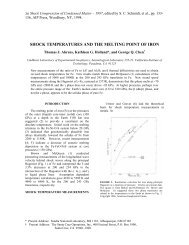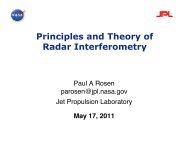VLIDORT User's Guide
VLIDORT User's Guide
VLIDORT User's Guide
Create successful ePaper yourself
Turn your PDF publications into a flip-book with our unique Google optimized e-Paper software.
1. Introduction to <strong>VLIDORT</strong>1.1. Historical and background overview1.1.1. Polarization in radiative transferThe modern treatment of the equations of radiative transfer for polarized light dates back to thepioneering work by Chandrasekhar in the 1940s [Chandrasekhar, 1960]. Using a formulation interms of the Stokes vector for polarized light, Chandrasekhar was able to solve completely thepolarization problem for an atmosphere with Rayleigh scattering, and benchmark calculationsfrom the 1950s are still appropriate today [Coulson et al., 1960]. Researchers started looking atthe scattering properties of polarized light by particles, and new more general formulations of thescattering matrices were developed independently by Hovenier [Hovenier, 1971] and Dave[Dave, 1970], and subsequently used in studies of polarization by Venus.With the advent of more powerful computers, a series of numerical RTMs were developedthrough the 1980s; many of these have become standards. In particular, the DISORT discreteordinate model developed by Stamnes and co-workers was released in 1988 for general use[Stamnes, et al., 1988]. Most RTMs today are either discrete ordinate codes or doubling-addingmethods, and vector models are no exception. In the 1980s, Siewert and colleagues made anumber of detailed mathematical examinations of the vector RT equations. The development ofthe scattering matrix in terms of generalized spherical functions was reformulated in aconvenient analytic manner [Siewert, 1981; Siewert, 1982; Vestrucci and Siewert, 1984], andmost models now follow this work (this includes <strong>VLIDORT</strong>). Siewert and co-workers thencarried out an examination of the discrete ordinate eigenspectrum for the vector equations, anddeveloped complete solutions for the slab problem using the spherical harmonics method[Garcia and Siewert, 1986] and the F N method [Garcia and Siewert, 1989]. These last twosolutions have generated benchmark results for the slab problem.Also in the 1980s, a group in the Netherlands carried out some parallel developments. Followingdetailed mathematical studies by Hovenier and others [Hovenier and van der Mee, 1983; deRooij and van der Stap, 1984], a general doubling-adding model was developed for atmosphericradiative transfer modeling [de Haan et al., 1987; Stammes et al., 1989]. This group was alsoable to provide benchmark results for the slab problem [Wauben and Hovenier, 1992]. Vectordiscrete ordinate models were developed in the 1990s, with VDISORT [Schultz et al., 2000] andits generalization [Schultz and Stamnes, 2000] to include the post processing function. In 1998,Siewert revisited the slab problem from a discrete ordinate viewpoint, and developed new andelegant solutions for the scalar [Siewert, 2000a] and vector [Siewert, 2000b] problems. One newingredient in these solutions was the use of Green’s functions to develop particular solutions forthe solar scattering term [Barichello et al., 2000]. For the vector problem, Siewert’s analysisshowed that complex eigensolutions for the homogeneous RT equations must be considered.Siewert also provided a new set of benchmark results [Siewert, 2000b]; this set and the resultsfrom [Garcia and Siewert, 1989] constitute our standards for slab-problem validation withaerosols.7



